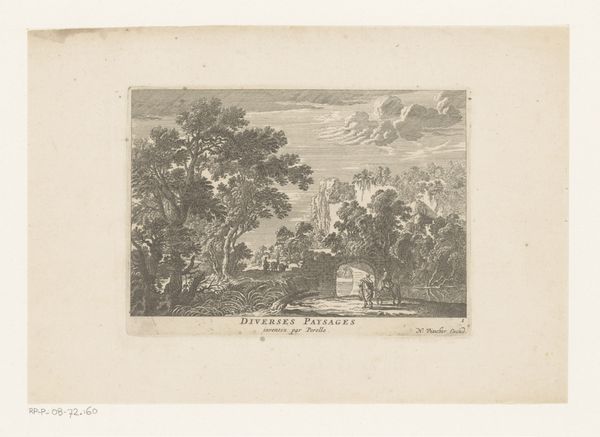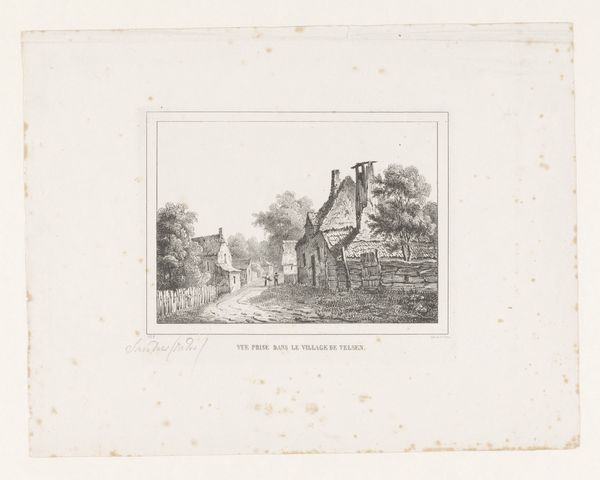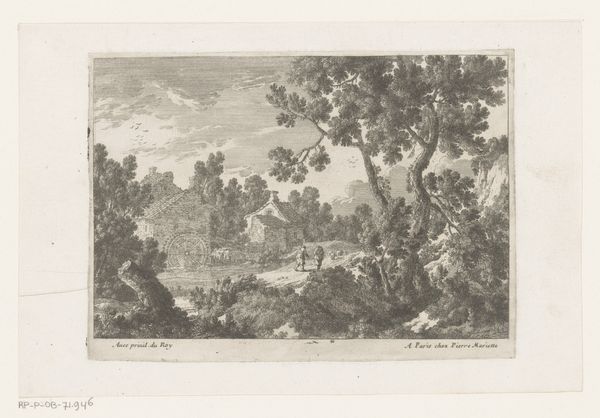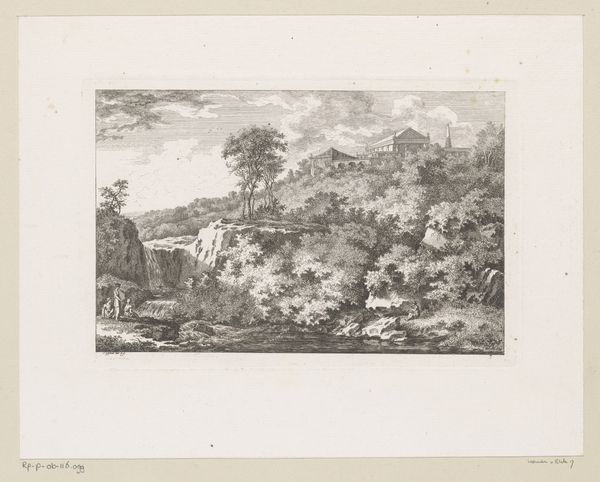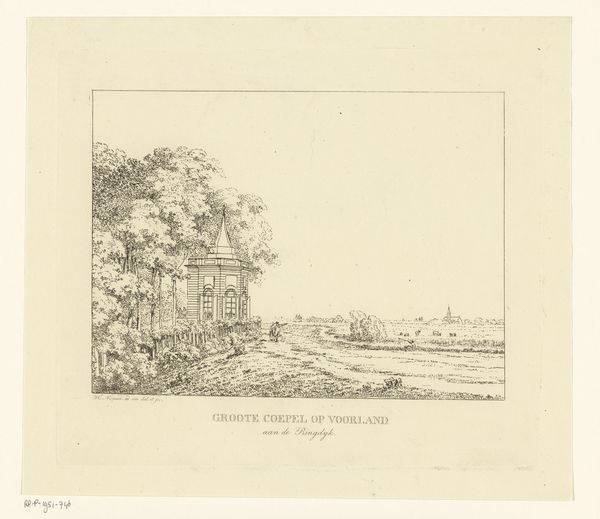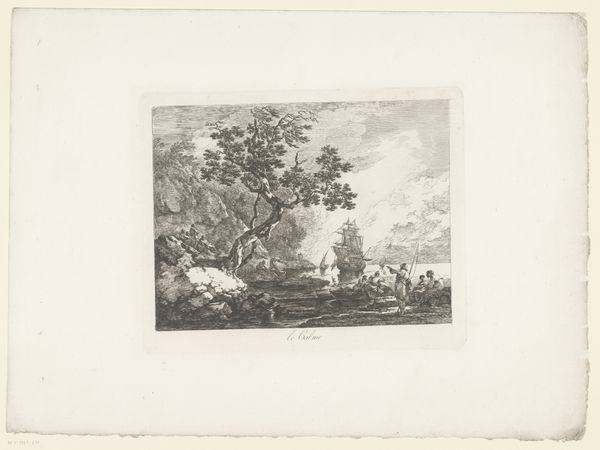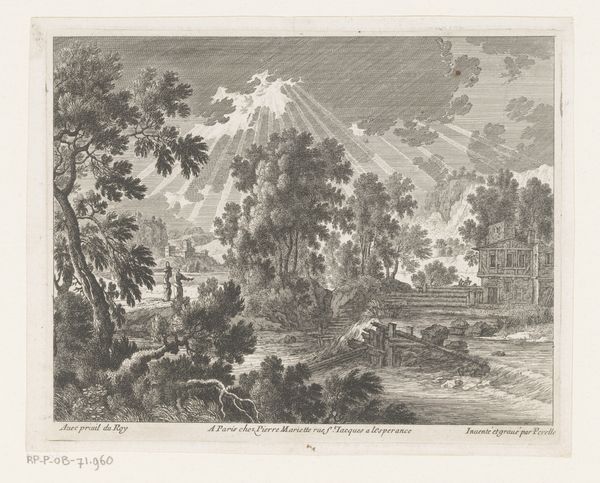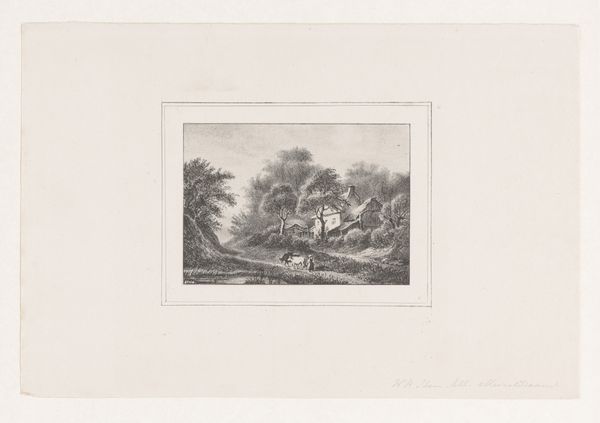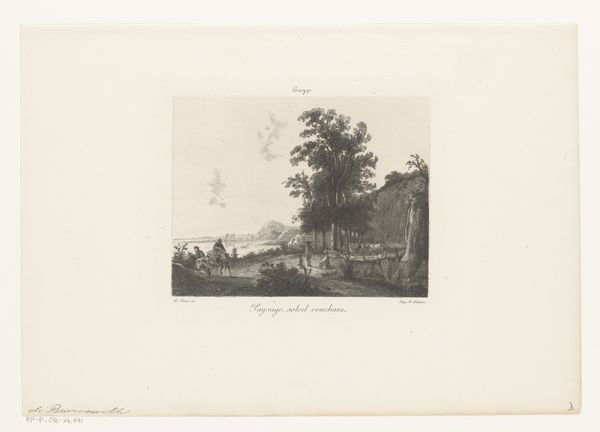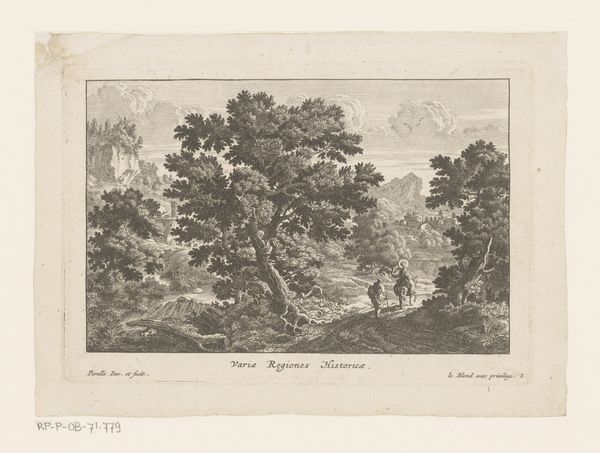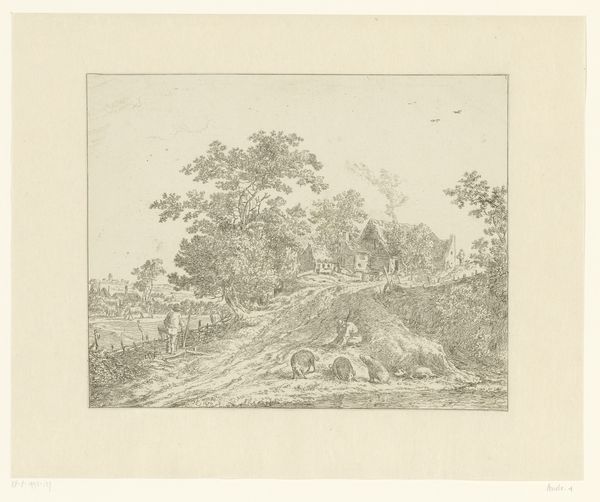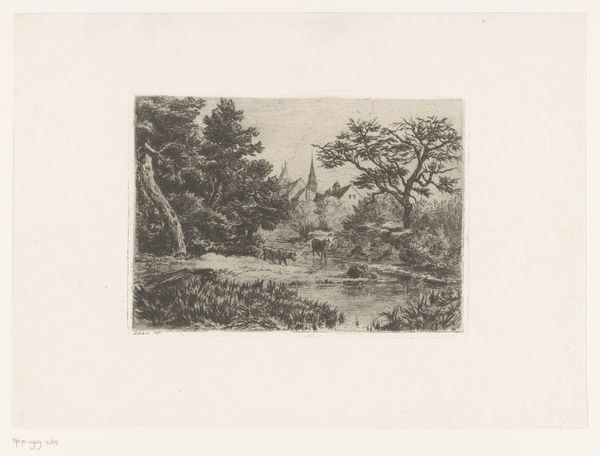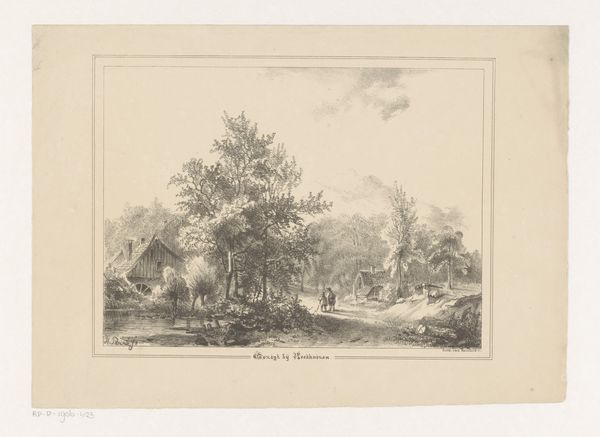
drawing, print, etching, paper
#
drawing
# print
#
etching
#
landscape
#
paper
#
romanticism
#
realism
Dimensions: height 268 mm, width 350 mm
Copyright: Rijks Museum: Open Domain
Curator: Here we have Anthony Jacobus Offermans' "Kreupelhout en struiken," or "Crippled Wood and Shrubs," a print etching that dates from around 1825 to 1829. Editor: My initial impression is how haunting and immersive the detail is—almost oppressive, a hidden, thorny embrace of nature. It’s quite small isn’t it? You feel the quiet desperation of the land through the artist’s eyes. Curator: Exactly, the artist, via the etching process, has achieved something incredibly dense, like a tapestry woven with ink. And considering its origins as a print, we must also think about the paper: the material, its weight, its history of being part of mass production. Editor: Right, it makes you consider the romanticism style, right, and if that could exist with "realism" that seems to coexist in here. Are you able to achieve high drama simply by seeing something truly as it is, warts and all? The gnarly shrubs and crippled trees take on an allegorical feeling to me. Is he talking about Dutch national character, maybe? Curator: Perhaps Offermans intended to capture the spirit of his environment with minimal romantic flourish. However, note how the work was "invented and designed", to cite what the work claims in one of its many written layers in its upper reaches, perhaps for illustration in Rotterdam. Print culture in the 19th century demanded accurate and accessible depictions for broader consumption. The etching allows this replication to be sold and dispersed easily in multiples. Editor: Interesting that what reads like a functional process led to the capture of these emotive qualities, and to be honest I am feeling very emotionally, looking here for a few moments, thinking about this process! Are you trying to tell me art is just something from factory-level labor and its end products that can, and perhaps should, be enjoyed by everyone, equally? Curator: The labor involved to mass produce objects certainly, and an effort to remove itself of high art and just show it for a "beautiful if real" piece from earth, but with that being said, let's take a pause. It is not easy to digest all this, even for myself, right now! Editor: Agreed, its intimacy and industrial means combine to deliver something striking and somewhat overwhelming to see today.
Comments
No comments
Be the first to comment and join the conversation on the ultimate creative platform.
